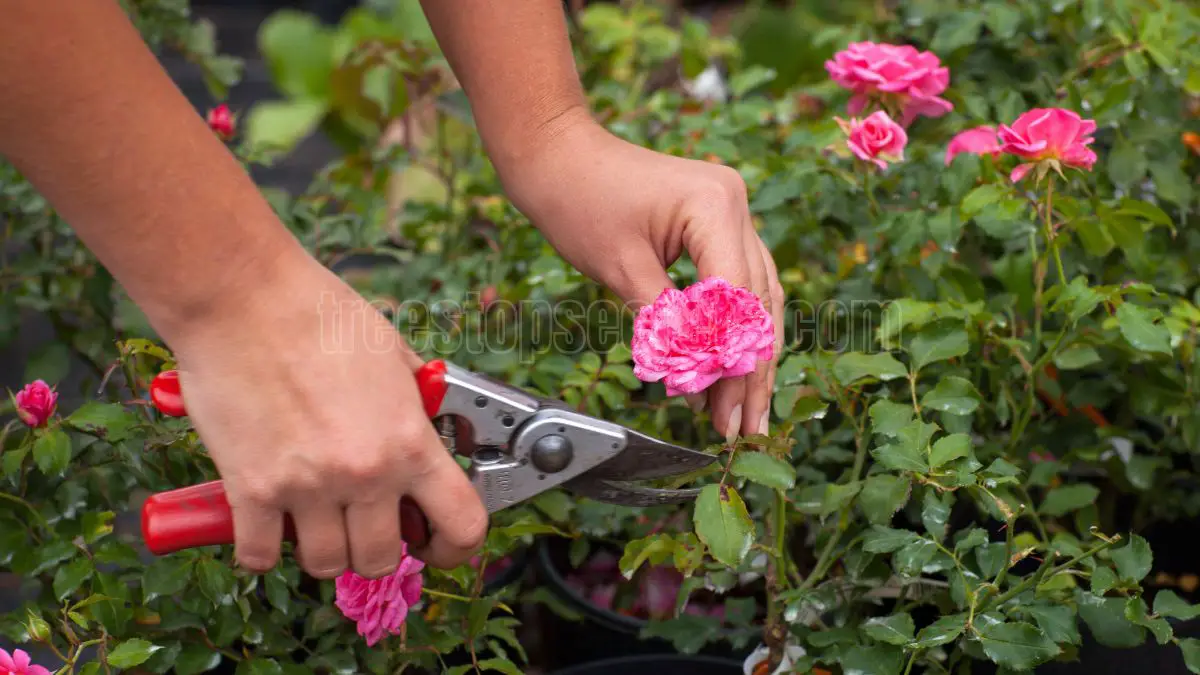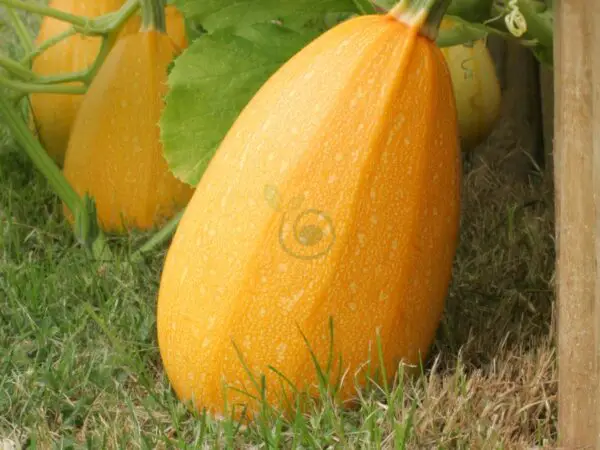Pruning roses for winter is crucial to maintaining healthy and vibrant blooms in the spring. By removing dead or weak branches, you not only improve the plant’s shape but also protect it from harsh weather. In this guide, we'll explore the best techniques for winter rose pruning, ensuring your roses remain strong and beautiful year after year. Whether you're a beginner or a seasoned gardener, these tips will help your roses thrive during the cold months and burst into color when warmer days return. Pruning roses for winter involves cutting back the plant to remove dead, damaged, or diseased branches and reduce its size. This helps prevent breakage from heavy snow and encourages healthy growth in the spring. Start by removing any deadwood and weak stems, then trim the remaining branches to about one-third of their size. Always make cuts above an outward-facing bud to promote outward growth and prevent crowding. Wondering how to keep your roses blooming beautifully year after year? Proper winter pruning is the secret! Not only does it protect your plants from the cold, but it also sets the stage for a stunning display of flowers in the spring. Read on to discover simple yet effective pruning techniques that will make your roses the envy of the neighborhood!
Optimal Timing for Pruning
Best Time for Pruning Roses
I've found that the prime time for pruning roses is late winter to early spring, right when those brand-new buds start peeking through. Depending on where I live, this falls anywhere between January and May (Garden Design). The heavy-duty cutting typically happens in early spring, just after the last frost has bid adieu. This timing lets the roses bounce back, without fear of Jack Frost wrecking the new growth.
| Climate Type | Optimal Pruning Time |
|---|---|
| Cold Climates | Early spring, after the last frost (March-April) |
| Mild Climates | Late winter or early spring (January-March) |
| Warmer Climates | Early spring, letting rose hips hang around to help trigger dormancy |
Pruning Guidelines Based on Climate
Pruning methods can flip-flop depending on where I am. In toastier regions, I tend to keep rose hips lingering on the plants during fall and winter. This little trick gets them all snoozy and ready for the health they deserve (Garden Design). Here’s how I tackle different rose varieties:
| Rose Type | Pruning Timing | Pruning Method |
|---|---|---|
| Hybrid Teas, Floribundas, Grandifloras | Early Spring | Chop off ⅓ to ⅔ of the cane length, aim for the outside bud |
| Repeat Blooming Modern Shrubs | Early Spring | Slice the main canes in half, snip those laterals to two buds |
| Repeat Blooming Old Garden Roses | Early Spring | Do as with Modern Shrubs: halve the main canes and clip the laterals |
Living in western Washington, late winter feels like the golden time for some serious pruning action, usually by late February. This way, only the sturdiest canes make the cut, while cutting too early risks dieback from those pesky freezes Swansons Nursery.
Essential Steps for Pruning Roses
Pruning roses might seem a bit intimidating at first, but once you get the hang of it, it's super satisfying. Here's how I like to tackle rose pruning without the fuss.
Creating a Vase-like Shape
The main game here is shaping your roses like a vase. This means clearing out the middle so sunlight can hit every leaf and the air flows easily. I focus on snipping off any branches that crisscross, as well as the skinny, feeble ones. Aiming for the outward-facing buds when trimming encourages the branches to sprout away from the center, reducing the chance of disease. It's kinda like giving your rose a good haircut – all about getting the right shape!
| Action | Description |
|---|---|
| Kick out crossing branches | Reduces cluster clutter at the center |
| Trim weak growth | Makes the plant stronger |
| Snip above outward buds | Gets the rose looking more outward by design |
Cleaning Up After Pruning
Once I've wrapped up the pruning, a cleanup session kicks off. Clearing all the chopped bits and fallen leaves is crucial to stop any unwelcome pests and diseases from camping out in the garden. A tidy space keeps us rosy! I swear by wiping my pruners with a bit of isopropyl alcohol between plants, just to keep everything nice and clean, makes all the difference.
| Task | Purpose |
|---|---|
| Chuck debris out | Stops disease from spreading |
| Sanitize tools | Keeps the nasties away |
Ensuring Proper Tool Sterilization
Having the right gear is half the battle. Heavy-duty gloves save my hands, and bypass hand pruners are perfect for the smaller branches. When it comes to the chunky canes, loppers are my best friends. To keep them in top shape, I make sure to sterilize and sharpen those blades on the regular.
| Tool | Description |
|---|---|
| Bypass hand pruners | Perfect for the lighter stuff |
| Loppers | Handles the big jobs |
| How to sanitize | Wipe with isopropyl alcohol A reminder to keep em' clean! |
Taking these steps means my roses are all set and ready to shine, preparing for a fantastic season after their trim.
Pruning Techniques for Different Rose Varieties
Ah, pruning roses—nothing beats a little hands-on gardening! Every rose variety's got its personality when it comes to pruning. Here's a simple guide sharing my experiences and tips for landscape and climbing roses, plus a few tricks for other rose types.
Pruning Landscape Roses
When I’m dealing with landscape roses, spring is my cue to get snippy. First off, those dead, old, or frankly, sad-looking branches have got to go. It's like giving the plant a fresh start, all while cheering on new growth. Next, I give the whole plant a good old haircut, chopping it back to about half its original height. These roses don't demand drama—they're hardy, resist diseases, and just keep getting prettier with a trim.
| What I Do | Why I Do It |
|---|---|
| Remove old/dead parts | Keeps the plant healthy and happy |
| Trim height by half | Maintains its vibrant looks |
Following Garden Design, I'm confident I'm not butchering my blooms.
Pruning Climbing Roses
Now, climbing roses are a different story, like dealing with teenagers with a mind of their own. You've got your main canes and your lateral canes. Lateral canes are the real bloom-bearers, so I snip them back to encourage more flowers. Shaping these canes towards outward-facing buds? Meh, not always necessary. The trick I go with is training those main vines to stretch horizontally—let the sunshine in and watch the fireworks of blooms.
| Cane Type | My Go-To Action |
|---|---|
| Main Canes | Spread 'em horizontally for more light |
| Lateral Canes | Trim 'em up for more blooms |
And those wild shooters? Tame them down. More tips can be found from Swansons Nursery.
Tips for Pruning Specific Rose Types
Different roses, different strokes. For Hybrid Teas, Floribundas, and Grandifloras, I go to town in early spring, trimming a good third (sometimes two-thirds) off the canes. Crucial move is slicing back to an outside bud—it's like giving them a sunscreen-coated face to the world.
| Rose Type | How I Prune 'Em |
|---|---|
| Hybrid Teas | Snip back 1/3 to 2/3 in early spring |
| Floribundas | Snip back 1/3 to 2/3 in early spring |
| Grandifloras | Snip back 1/3 to 2/3 in early spring |
| Knock Out Roses® | Prune canes to a foot in late winter or early spring |
By sticking with these tricks, my roses thrive, putting on vibrant shows every season. To fine-tune my skills, I lean on NYBG Plant Information.
Winter Pruning for Rose Health
Pruning Roses for Winter Preparation
I gotta say, giving my roses a good pruning before winter hits is like treating them to a cozy snuggle. It's all about making sure they're comfy during those cold months so they can bloom like champs come spring. When I'm in my yard, pruning roses, here's my go-to routine: I clear off the old, tired flowers, snip away any sad, wilted leaves and canes, bundle the canes up like a bouquet, and pile on some good ol' mulch around the roots. And if it gets super chilly, I even throw on a little cover over my rose bushes for extra coziness. Now, timing is key here. I usually grab my pruners in January or February. Why? Because roses are chilling out, not growing, so they won't freak out if it gets freezing cold once they're trimmed (HGTV). Each snip and tuck helps boost their energy savings during their nap time and keeps those cold winds from giving them a bad hair day.
| Pruning Steps | What to Do |
|---|---|
| Snip dead blossoms | Get rid of old flowers to boost new growth. |
| Trim dead leaves & canes | Cut back all sad stems and leaves. |
| Bundle up canes | Tie them up snug to avoid damage from gusts or snowfalls. |
| Load up soil/mulch | Stack soil or mulch around the rose base. |
| Toss on a cover | Lay down burlap or fabric for insulation if needed. |
Mulching and Insulation Techniques
Mulching ain’t just a chore, it’s my little magic trick for keeping my roses snug all winter long. Tossing a layer of mulch around adds some serious heat protection, like a nice cozy blanket. I usually go for a 9 to 12 inch heap around my rose babies (Mike's Backyard Nursery). Why mulch over soil, you ask? Well, mulch lets those roses breathe, dodging any stem rot nuisances. And if a cover is needed, steer clear of any clear plastic — it turns into a sauna, not what you want for their winter nap. I’m all about burlap or leaves; they keep things just right, letting the air flow without losing warmth. Here's a cheat sheet to nail that mulching gig:
| Mulching Moves | What to Do |
|---|---|
| Mulch Height | Pile mulch 9-12 inches high around the base. |
| Go Organic | Use natural mulch like bark or wood chips. |
| Cover with Care | Pick burlap or leaves, steer clear of clear plastics. |
By giving my roses this seasonal spa treatment, I'm setting 'em up to burst back to life in spring with flair.
Specific Considerations for Winter Pruning
Covering Roses for Winter
When Jack Frost comes knocking, I've got to shield my roses from the worst of his chill. Rather than clear plastic that can turn my plants into a sauna, I opt for good ol’ burlap or fallen leaves. These materials keep my roses bundled up nice and cozy while letting them breathe a little too. It's like wrapping them in a snug sweater that won't cook 'em when there's a surprise warm day. Now, let's talk mulch. I’ve learned piling up soil or mulch around the base of my rose bushes – think 9-12 inches tall and wide – works wonders. This trick keeps them toastier through the cold snaps. Mulch wins over soil in my book because it's like a breath of fresh air for those stems, reducing the dreaded rot (Mike's Backyard Nursery).
| Method | Material Used | Why It's Great |
|---|---|---|
| Covering | Burlap / Leaves | Keeps in warmth, lets air flow freely |
| Mulching | Organic Mulch | Airy covering that fights off nasty rot |
Propagation Techniques During Winter Dormancy
Winter's basically nature's nap time, and that's when I sneakily start propagating. Rose cuttings during dormancy? Oh yes! I snip 'em, wrap 'em in plastic bags, and let them chill out for 6 to 8 weeks. This makes a mini greenhouse situation that boosts root growth. Once they're sprouting, I pop them into soil to flourish (Mike's Backyard Nursery). I'm kind of picky too – I only pick healthy cuttings and snip off any lazy leaves, leaving a few energetic buds. This little trick lets me expand my garden even when the main plants are catching Z's.
| Step | How Long | Pro Tips |
|---|---|---|
| Plastic Wrap | 6 to 8 weeks | Keep 'em humid for happy little roots |
| Soil Transfer | Once rooted | Keep the soil cozy – moist, not swampy |
Keeping these tips up my sleeve ensures my roses have a fabulous winter. Not only do they stay snug and bloom-ready, but my garden? It just keeps getting better, with new rose varieties waiting to shine when spring rolls around.
Seasonal Pruning for Optimal Growth
So, pruning roses—it's like giving them a fancy haircut to keep them looking spiffy and growing strong! Over the years, I've picked up some neat tricks for cutting them back that work wonders in spring, as well as some softer touch-up techniques for the hot summer days and the chill of fall.
Strategies for Spring Pruning
Come spring, it’s time to break out the gardening gloves. When I say spring pruning, I mean getting down to business before those roses start to burst with new life. Typically, we're talking late winter into early spring. My calendar’s pretty flexible here depending on Mother Nature. I’m talking anywhere from January, if you're in a sunny spot, all the way through May for the chillier areas (Garden Design). But here’s the kicker—different roses like different trim schedules:
| Type of Rose | When to Prune | How to Prune |
|---|---|---|
| Single-flowering | A month after they bloom | Snip off dead wood and give 'em a good shape up. |
| Multi-flowering | Late March or April | Clip back to an outer bud, slicing off about ⅓ to ⅔. |
| Hybrid Teas, Floribundas, Grandifloras | Early Spring | Whack off about ⅓ to ⅔ of the canes. |
| Repeat Blooming Shrubs | Early Spring | Halve the main canes, and just leave a couple buds on laterals. |
This cheat sheet is gold when I’m out there with the clippers—it keeps my head clear and the blooms coming strong.
Light Summer and Fall Pruning Techniques
As the heat cranks up in summer and eases into fall, I take it easy on the pruning front. Don’t want to push the ol’ roses too hard, or they’ll skimp on the blooms. Deadheading's my best friend here—snip those spent flowers to keep the party going, without chopping down too much of the plant itself. Into late summer or getting into the fall rhythm, here’s what I get up to with the light pruning:
- Kick out any dead or sick bits: I scan my roses for any stuff looking off and give it the boot.
- Tidy up renegade stems: Making sure none of the stems are making a bid for freedom and keeps things nice and tidy.
- Cut back any washed-out leaves: Gives the plant a chance to pump energy back into solid growth before winter rolls around.
These lighter techniques are like throwing a tea party for my roses, keeping them chipper and ready to snooze through the winter months. All in all, keeping it balanced and knowing when to go heavy and when to lighten up is my trick for roses that wow me year after year. Tidy cuts, the right timing, and some loving attention make sure my garden's got a blooming fantastic display season after season.
Final Thoughts: "Pruning Roses for Winter"
Pruning roses for winter is more than just a seasonal task; it's a vital step in nurturing your plants for healthy growth and abundant blooms. By taking the time to prune correctly, you can prevent damage from the harsh winter weather and set your roses up for a spectacular spring display. Remember, a little care now will reward you with a garden full of beauty and color when the warm months arrive!
FAQs about Pruning Roses for Winter
Q: When is the best time to prune roses for winter? A: The best time to prune roses for winter is after the first hard frost, typically in late fall or early winter. This ensures that the plant is dormant and less likely to suffer from shock. Q: How much should I cut back my roses for winter? A: Generally, you should cut back your roses to about one-third of their current height. Focus on removing dead, diseased, or weak stems to strengthen the plant and promote healthy growth in the spring. Q: What tools do I need for pruning roses in winter? A: You’ll need a pair of sharp pruning shears, gloves, and disinfectant for cleaning the shears between cuts. Loppers or a pruning saw may be necessary for thicker branches. Always ensure your tools are clean to prevent the spread of disease. Q: Can I prune my roses in the spring instead of winter? A: While light pruning can be done in spring, heavy pruning is best done in winter when the plant is dormant. Spring pruning may lead to the removal of new growth and buds, affecting the blooming season. Q: Should I remove all the leaves when pruning roses for winter? A: Yes, removing all the leaves helps reduce the risk of pests and diseases. It also allows you to see the structure of the plant better, making it easier to prune effectively. Q: How do I protect my roses after pruning them for winter? A: After pruning, apply mulch around the base of the plant to protect the roots from freezing temperatures. You can also cover the plant with a protective barrier, like burlap, in extremely cold climates.
Image Source: Paid image from CANVA




